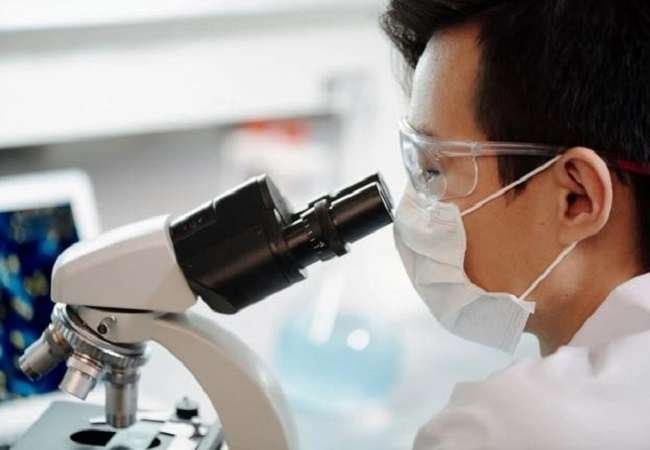New emerging technologies open up different possibilities in the medical field every year. With the rise of chronic diseases and medical conditions, MedTech companies have to keep up and bring innovative solutions for the improvement of the healthcare system worldwide.
What exactly is medical technology?
Medical Technology can be defined as the technologies that diagnose, treat and improve a person’s health. These devices are produced in order to treat both low-risk and high-risk medical conditions and they vary from rapid tests to MRI scans, from surgical gloves to pacemakers and so on.
Medical professionals need to keep pace with learning management solutions for medical device success in order to implement the technology in their daily treatment of ill patients. The benefits of MedTech are seen throughout the world every year, because of their time-saving and accurate nature in the medical field.
Apart from improving diagnostics, MedTech solutions also significantly reduce human error. Electronic health records (EHRs), wearable monitoring devices, and telehealth systems are helping bridge the gap between patients and doctors, especially in rural and underdeveloped areas. Through these innovations, physicians can now access real-time data and make well-informed decisions.
Machine Learning in Healthcare: How AI will Shape the Future of Healthcare
Artificial Intelligence (AI) and machine learning are set to revolutionize the healthcare industry. AI can analyze massive volumes of medical data to discover patterns and suggest treatment plans that would take human doctors much longer to identify. AI is not just a tool—it’s a partner in diagnostics, treatment, and even post-care monitoring.
What are the new technologies for 2022?
-
Robotics and Artificial Intelligence
AI is proving to be very accurate and valuable in the early diagnosis and detection of diseases. It is used to oversee early-stage heart diseases in order to help medical professionals discover any life-threatening conditions. AI has proven to increase the review time on breast mammograms by 30 times, with an accuracy of 99%.
It is also used in medical administration. The startup Nyquist uses AI to create a medical database worldwide to provide analytics on pharmaceuticals and medical devices. With this, medical companies can speed up the innovation process and can also identify innovations in emerging markets that develop cheaper but effective medical technologies.
As for robotics, the US-based company Asensus Surgical is on the move to change the operating process, thanks to the immense funding this year. Their telemonitoring system Senhance Connect gives access to surgeons to real-time support from global specialists in order to reduce any risks of life-threatening complications in the operating room.
With funding of nearly $430 million, the company is developing an eye-tracking system that enables surgeons to control the Senhance Surgical Robot System just by glancing at it.
Robotic surgery is being used more commonly in orthopedic, neurological, and even dental procedures. These systems allow for more precise movements, reduced blood loss, and faster recovery times, which benefits both patients and healthcare providers.
-
Neurotechnology
Neurotechnology covers all components developed to understand and visualize the brain, and also to improve and repair its functions. These are the devices that can intercept electric pulses. Neuro devices are still in the research phase. For example, Neuralink, developed by Elon Musk, is a device that would be inserted into the human brain in order to record its activity and transmit the data onto a computer. Medical professionals would then be able to analyze the given data and use it to electrically stimulate the necessary brain activity. If proven successful, it can potentially cure brain diseases like Parkinson’s and Alzheimer’s. Musk hopes to move the clinical trials from animals to humans in 2022.
In addition to treating neurological disorders, neurotech is opening new possibilities in cognitive enhancement and mental health therapy. Devices like transcranial magnetic stimulation (TMS) and deep brain stimulation (DBS) are already being used to manage depression, OCD, and epilepsy in patients where conventional treatments have failed.
-
Clustered Regulatory Interspaced Short Palindromic Repeats (CRISPR)
CRISPR is the most advanced gene-editing technology to this day. It is used to cut out infected DNA strands and has the potential to overcome some of the biggest threats to human health, like HIV and cancer.
Beam Therapeutics, a US biotech company has regulatory approval to begin another SCD trial with the goal to increase fetal hemoglobin. The company uses base CRISPR editing that works without double-stranded DNA breaks, which should be safer than conventional CRISPR.
Another US biotech company, Graphite Bio, has begun enrolling patients and it is set to test an alternate approach of using CRISPR to directly fix the mutation that causes SCD, regressing it to the healthy version.
Even though CRISPR has endless potential applications in healthcare, like treating and preventing life-threatening diseases and modifying genetic defects, it has raised many ethical concerns in the medical world. Some view it as an act of ‘playing God’ by editing genes in order to ‘design’ babies.
Moreover, global regulatory frameworks are still catching up with the pace of innovation in genetic engineering. This creates a gap between discovery and safe, ethical implementation.
Final Thoughts on the MedTech Revolution
MedTech is not just reshaping healthcare—it’s redefining it. From wearable health monitors that track our vitals in real-time to nanobots that may one day travel through our bloodstream to treat illness directly at the cellular level, the integration of technology and medicine is only accelerating.
MedTech will continue to break barriers in the coming years, making treatment more accessible, diagnostics more precise, and healthcare more personalized. While challenges remain—such as affordability, regulatory concerns, and ethical debates—the benefits are undeniable.
The future belongs to those who can innovate, adapt, and harness technology to improve lives—and MedTech is at the heart of that future.
